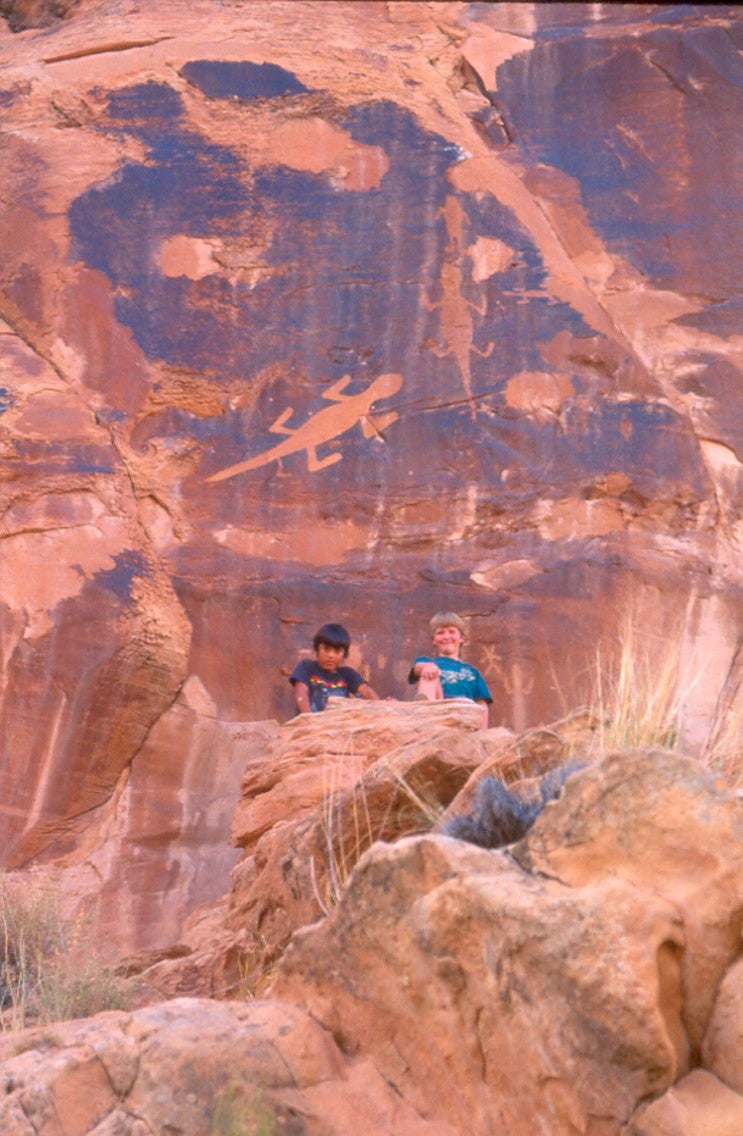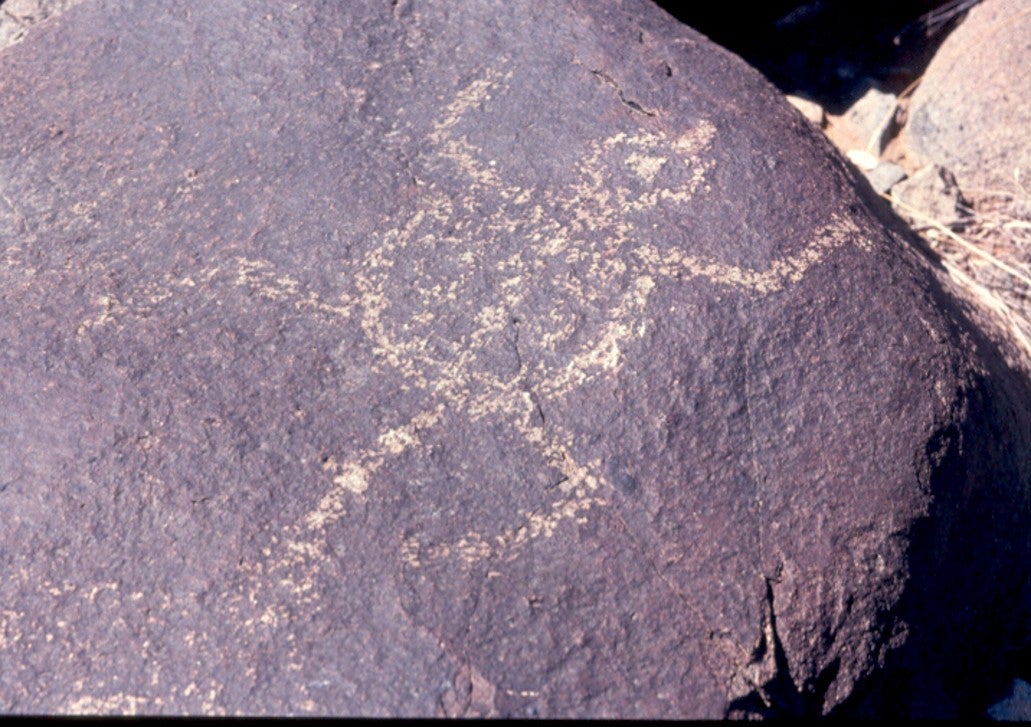Insight into the world of the Cahuilla in the late 1800s
“If you talk to the animals they will talk with you and you will know each other. If you do not talk to them you will not know them and what you do not know, you will fear. What one fears, one destroys.” — Chief Dan George, Tsleil-Waututh Nation, British Columbia, Canada
Today, if you need food or clothes or a wrench, it is an easy trip to a supermarket, department store, or hardware store. Now imagine the life of the Cahuilla people who lived on these lands for thousands of years before European contact. If you peel away those modern conveniences, this landscape seems so inhospitable, yet for those pre-contact Cahuilla it was home.
Dan Coleman, graduate of our 2020 California Naturalist class, gifted me a book titled “The Ethnobotany of the Coahuilla [sic] Indians of Southern California," the 1900 PhD Dissertation of David Prescott Barrows (Department of Anthropology, University of Chicago). If David and I share any familial connection it goes far beyond any genealogy I am aware of. Early surnames in Anglo-Saxon England were typically more of a designation of where you lived, not necessarily genetic relationships. Back then, “Barrows” referred to a small, wooded hill, often an ancient burial mound. There were lots of those in Anglo-Saxon England, so there were likely lots of unrelated Barrows. If we were related, it would make a wonderful story of a connection across more than a century, one a study of people and their relationship to the land, and the other a study and effort to reconnect people to the land, but alas, probably not. Nevertheless, David’s dissertation was based on interviews and first-hand observations of Cahuilla living in the late 1800s, much as they always had, and so provides an invaluable insight into a world before anything resembling a modern convenience existed in the Coachella Valley.
David referred to the Cahuilla as one of very few remaining “wild” indigenous people still living in California — meaning most of the others had gone through an extensive period of being tied to the Spanish and then Mexican missions, often a relationship forced on them, and so had already lost some if not most of their pre-contact culture. Unlike those “mission Indian tribes” who then were given tribal names tied to those missions, Cahuilla was a name the Cahuilla had given themselves.
In that day the Cahuilla were not limited to the desert floor, but rather seasonally moved up to as high as 6,000’ in the mountains during the summers, then back to the desert floor in the winter. No need for air conditioning. David prophetically referred to those mountains as “scantily supplied with vegetation as they seem to be, they are rich in botanical species, and the region is one of wondrous interest to the collector, and of great value to the Indian, for it is from here that there come many of his most valued plant products."
In the mountains the Cahuilla built their home — which they referred to as a kish — using stout poles of what we now call chamise, Adenostoma fasiculata, that were six to ten feet long and five inches in diameter. I have never seen a chamise nearly that large, which could mean that there was a very different, longer, fire cycle then, which allowed these typically short shrubs to get really big — or that David confused them with a close relative, the ribbon wood or red shanks, Adenostoma sparsiflolium, which typically get that large today. Other structural elements included manzanita branches or oaks. These structural elements were tied together using the fibers of Mojave yucca, Yucca schidigera, (then called Yucca mohavensis). Roofs were a thatching of rushes or sedges, and walls were a woven willow branch and mud “wattle." The Cahuilla’s low elevation, winter homes were a similar design, probably using other tree species for structural elements, but used palm fronds for thatching. No need to go to Home Depot.
The Cahuilla made bows of seasoned screwbean mesquite, Prosopis pubescens, or willow, Salix nigra. The bow string was made of sinew. The arrows were of two sections, the longer shaft made from bamboo-like Carrizo grass/common reed, Phragmites australis — then P. communis. The arrow tip where the arrowhead was fastened was then made from much harder ribbon wood. For over 30 years I have been telling students the Cahuilla made their arrows from arrow weed, Pulchea sericea. Why else name a plant that? David does mention a second arrow material type using a mugwort, Artemesia ludvociana, that superficially looks like arrow weed, but he clearly describes the plant’s habitat, and it is not the palm oases where arrow weed grows.
David refers to the Cahuilla women as the ethno-botanists of their communities. It was the women who were responsible for the collecting and preparing of all plant-based foods; the men were the hunters. David states that “it is probably true that an untutored white man lost here would find hardly a single plant to yield him a mess of palatable food … the absence of food is, however, apparent rather than real … the American deserts are … quite rich in species ... and given the knowledge and patience of the Indian woman, the problem is far simpler than would be supposed." He also suggests, as have I in previous essays, the region occupied by the Cahuilla contains a greater variety of food abundance than that for most Indian tribes.
David refers to not less than 60 species of plants used for nutrition, and at least 28 used for narcotics or medicine. The staple food was mesquite, honey mesquite, Prosopis glandulosa (then P. juliflora) and screwbean mesquite. However, nearly all of the woody legumes are used, including cat claw acacia, Senegalia greggii, blue paloverde, Parkinsonia florida, and Parry’s jujube, Ziziphus parryi. The legumes are extremely nutritious and can be stored for years, making them and ideal desert food. They are typically prepared by grinding the seeds and sometimes the pods as well into a fine powder using a metate, and then cooked into a warm mush, or atole.
Next in importance is the agave, Agave deserti. Agaves really were unavailable to most other California tribes, and the Cahuilla cherished them with ceremonies that went with the selection of which agaves to harvest, digging roasting pits, roasting them and then enjoying their “sweet and delicious taste and wonderfully nutritious." I have been told that their flavor is akin to a roasted mango. Once roasted, their high sugar content allows then to be kept, unrefrigerated, “for years." Additionally, along with yuccas, agaves are an important source of fiber, for mending clothing to (yucca fiber) making sandals.
Interestingly, although David describes the tribes of Baja California consuming California fan palm fruits, he never saw or heard of the Cahuilla doing so. Perhaps the Cahuilla had one or more secrets they kept to themselves. When at higher elevations, pinyon nuts and oak acorns from several oak species became important sources of food.
The emerging message is clear. Rather than a food wasteland, the southern California deserts, especially withing the Cahuilla’s lands, were a cornucopia of gastronomical possibilities. Importantly, with all this harvesting occurring, the Cahuilla lived sustainably on this landscape. Whether this was a knowledge gained through trial and error, or simply the nature of the desert foods they harvested, the result was a landscape where people, plants, and other animals (aka biodiversity) were maintained.
Nullius in verba
Go outside, tip your hat to a chuckwalla (and a cactus), and be safe.

